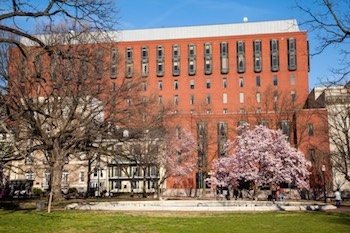Each week, we succinctly summarize the preceding week of Federal Circuit precedential patent opinions. We provide the pertinent facts, issues, and holdings. Our Review allows you to keep abreast of the Federal Circuit’s activities – important for everyone concerned with intellectual property. We welcome any feedback you may provide.
– Joe Robinson, Bob Schaffer, Lindsay Henner, Parker Hancock, and Puja Dave
85-2. Exclusive Licensee Which Holds All Substantial Rights Can Sue Without Patent Owner; Proper Claim Construction Warrants Reversal of Preliminary Injunction
Luminara Worldwide, LLC. V. Liown Elecs. Co. (Fed. Cir. Feb. 29, 2016) (Before Moore, O’Malley, and Taranto, J.) (Opinion for the court, Moore, J.). Click Here for a copy of the opinion.
Luminara sued Liown Electronics for infringement of a patent on artificial candles, tortuous interference with contract, and trademark infringement. The dispute arose out of an artificial flame technology that Disney invented for its Haunted Mansion ride. Disney obtained several patents covering the technology, and licensed the patents to Candella, LLC (now Luminara) to make consumer goods with the technology. Candella approached Liown, a Chinese manufacturer, to discuss whether Liown could make the artificial candles. After these discussions broke down, Liown used information from the discussions to make the patented candles and sell them into the United States. Candella sued, and moved for a preliminary injunction. The district court granted the injunction for patent infringement of clam 1, without addressing the tortuous interference claim. Liown appealed, alleging that Candella did not have standing to bring the suit, and that Claim 1 was likely invalid over an earlier Disney artificial flame patent.
Liown argued that Candella could not sue for patent infringement without joining Disney, because Candella was not the exclusive licensee of the asserted patents. Liown pointed to an “affiliate” clause in Candella’s agreement with Disney, which permitted “affiliates” of Disney to use the patents. The license further defined affiliates as, among other things, “any other entity . . . operated by or under license from the Walt Disney Company . . . .” Because Disney can freely create affiliates by licensing them, and such licenses include the right to use the patents, the license to Candella was effectively non-exclusive. Liown also argued that Candella could not sue without Disney, because Disney retained substantial rights in the patents, under the same “affiliate” provisions, as well as Disney’s title to the patents, its responsibility to pay maintenance fees, and its financial interest in any litigation.
However, another provision clarified that the term “affiliate” does not refer to an entity operating under a Disney license, if the only license is to the patented artificial flame technology. Further, over the course of several amendments, Disney granted increasing rights to Candella, by which Disney specifically intended to give Candella standing to sue for patent infringement. Liown even admitted this was the purpose of the amendments. Thus, Candella argued it was an exclusive licensee.
The court held that the rights retained by Disney were not “substantial rights” sufficient to deprive Candella of standing, because Disney did not retain a right to exclude. Disney merely had a financial interest in any enforcement efforts by Candella. Thus, Candella did not have to join Disney to maintain the lawsuit.
Liown challenged the grant of a preliminary injunction, alleging that claim 1 is likely invalid over prior art. Claim 1 included a flame element that was “free to pivot when supported by the flame support element.” Liown alleged that an earlier Disney patent taught a flame element supported by a two-axis gimbal, which allowed the flame to rotate about two axes, and anticipated the “free to pivot” invention of claim 1. The district court construed “free to pivot” as requiring two limitations from the specification: (1) chaotic movement, and (2) movement about more than two axes. The Court agreed that the term should include “chaotic movement” in light of the specification’s clear disavowal of non-chaotic pivoting. However, the court disagreed that the term must include movement about more than two axes, finding no disavowal or redefinition in the specification. Turning to the asserted prior art, the Court found that it taught a flame body “free to pivot” about two axes, and also taught chaotic movement. Thus, the preliminary injunction was improperly granted, because claim 1 is likely invalid.
The Court remanded to the district court the decision as to whether the tortuous interference claim would independently justify a preliminary injunction.

![[IPWatchdog Logo]](https://ipwatchdog.com/wp-content/themes/IPWatchdog%20-%202023/assets/images/temp/logo-small@2x.png)




![[Advertisement]](https://ipwatchdog.com/wp-content/uploads/2024/04/Patent-Litigation-Masters-2024-sidebar-early-bird-ends-Apr-21-last-chance-700x500-1.jpg)

![[Advertisement]](https://ipwatchdog.com/wp-content/uploads/2021/12/WEBINAR-336-x-280-px.png)
![[Advertisement]](https://ipwatchdog.com/wp-content/uploads/2021/12/2021-Patent-Practice-on-Demand-recorded-Feb-2021-336-x-280.jpg)
![[Advertisement]](https://ipwatchdog.com/wp-content/uploads/2021/12/Ad-4-The-Invent-Patent-System™.png)






Join the Discussion
One comment so far.
Eric Berend
March 13, 2016 10:11 amChinese companies *LOVE* the AIA and its allied recent anti-inventor initiatives: see how competent these already are, at mounting arguments against “validity”.
Chinese companies and the CAFC – ‘perfect together’.
Perhaps, I should send them an engagement ring. We are destined to see many more “unholy marriages” such as this, in the future.